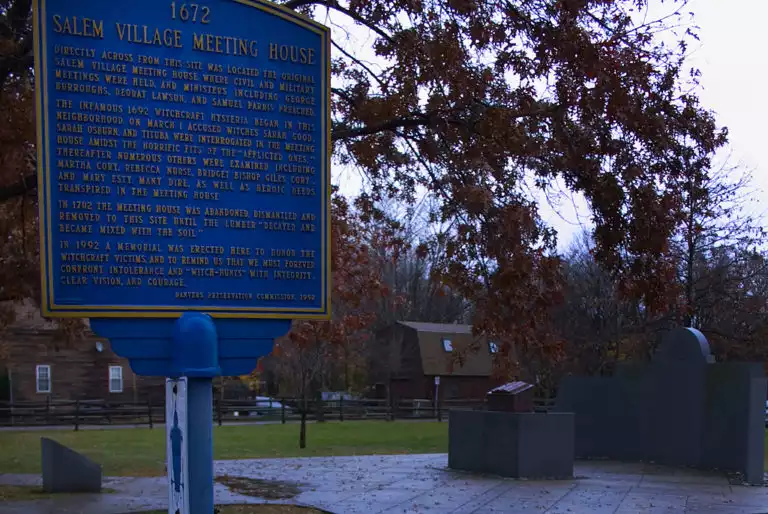
Earlier this month I stumbled upon a newspaper article about the exoneration of Elizabeth Johnson, Jr., the only remaining person whose conviction as a witch in the Salem Witch Trials of 1693 was still extant. Even more extraordinary to me than the length of time it took for Johnson’s conviction to be overturned was the fact that her vindication resulted from the efforts of a class of eighth graders. The students, guided by their teacher, conducted research, studied the legislative process, and lobbied their state lawmakers and governor to clear Johnson’s name after 329 years.
I was startled by the sophistication and creativity of the project. Moreover, the students were exploring a case study with powerful, and regrettable, parallels to today’s era. Our society is still struggling with many of the issues that characterized the era of the Salem Witch Hunt, including hostility toward marginalized groups; the dangerous, unfettered spread of misinformation; and reliance on a flawed judicial system. No doubt these areas of overlap were on the eighth graders’ minds as they worked on this project. What might have initially seemed like a relatively low-stakes exercise became a valuable lesson in information literacy, historical thinking, civic engagement, and advocacy. As a state senator quoted in the article said, “These students have set an incredible example of the power of advocacy and speaking up for others who don’t have a voice.”
So how is this related to libraries? As carefully curated repositories of varied sources of knowledge, libraries can offer guidance for those, like the eighth graders above, seeking information or looking to increase their civic involvement. Beyond books, the library hosts countless research databases, newspapers, multimedia collections, and more. In addition, the programs and events the Princeton Public Library hosts, particularly as part of our National Endowment for the Humanities-supported initiative, invite the community to wrestle with complex questions at the local, national, and global level. We encourage library visitors to employ our collections and programs to support research and projects, large and small. You never know, the next grassroots effort to correct a historical wrong could be underway in the library as we speak!
Photograph by Tim Bouwer. Courtesy of Creative Commons (CC BY-NC-ND 2.0).
The sign reads: “Directly across from this site was located the original Salem Village Meeting House where civil and military meetings were held, and ministers including George Burroughs, Deodat Lawson, and Samuel Parris preached. The infamous 1692 witchcraft hysteria began in this neighborhood. On March 1 accused witches Sarah Good, Sarah Osburn, and Tituba were interrogated in the meeting house amidst the horrific fits of the ‘afflicted ones.’ Thereafter numerous others were examined including Martha Cory, Rebecca Nurse, Bridget Bishop, Giles Cory, and Mary Esty. Many dire, as well as heroic deeds transpired in the meeting house. In 1702 the meeting house was abandoned, dismantled and removed to this site until the lumber ‘decayed and became mixed with the soil.’ In 1992 a memorial was erected here to honor the witchcraft victims, and remind us that we must forever confront intolerance and ‘witch-hunts’ with integrity, clear vision, and courage.”
